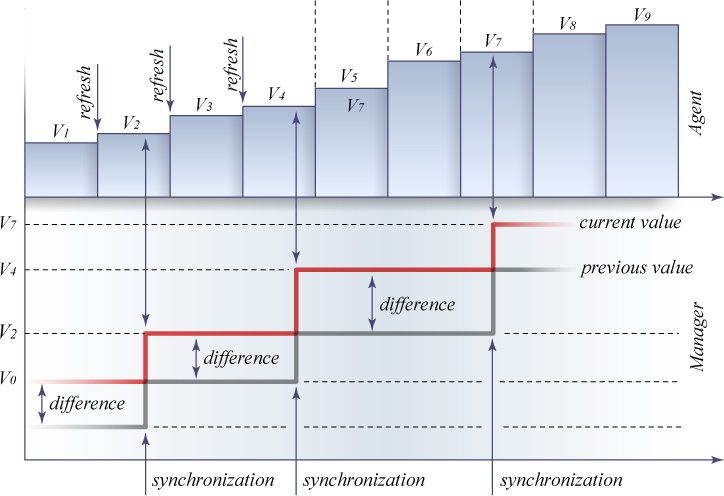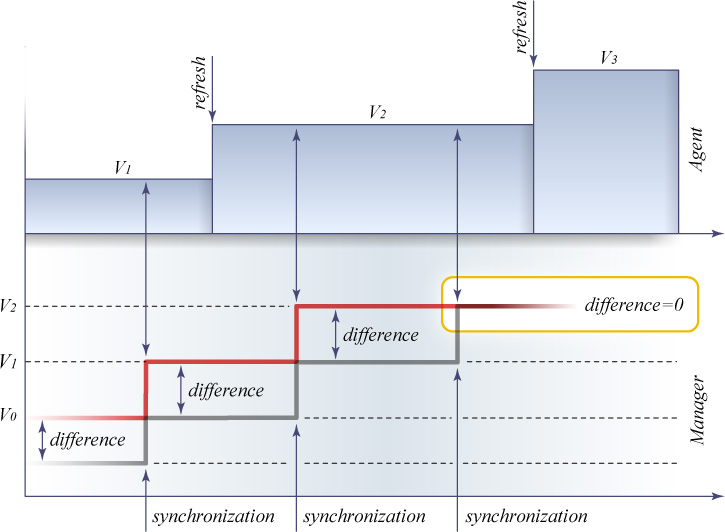Data Processing
Functionally, monitoring is a process of collecting and analyzing data. The raw data collected from monitored devices should be processed for the purpose of extracting quantitative characteristics we can analyze. This section contains a brief overview of data-processing types used in Iotellect Network Manager and issues they are concerned with.
Raw Data
In some cases, quantitative characteristics you want to monitor can be directly fetched from device and used "as is" in monitoring tasks without additional pre-processing. As an example hrProcessorLoad SNMP variable can be mentioned, which indicates "the average, over the last minute, of the percentage of time that this processor was not idle" [RFC1514 - Host Resources MIB]. This value characterizes current CPU utilization and can be use "as is", for example, in charts, or alerts.
Differentiation
But not all the values we want to track could be expressed as raw data. Often collected values must be processed in a certain way to be useful for monitoring. One of the most common processing operations is differentiation. Here it means calculating difference between current and previous samples.

Differences can be useful per se in some cases, but one of the most frequent and important utilization for this metric is time differentiation as described below.
One important issue must be discussed here. Values we use for monitoring are refreshed periodically at a device side with a certain interval. Iotellect Network Manager reads those values during synchronization routine at different moments in time (with respect to its own synchronization period). Therefore providing too small synchronization period (smaller than refreshing interval at device side) can give irrelevant result: successive samples would be equal (as device had no enough time to refresh the value), and result difference would be zero.

 | Synchronization period of SNMP variables used in differential metrics should not be smaller then refreshing interval at device side. Refer to specific device documentation to find out how often the device refreshes its indicators and how to customize this. Alternatively, you can just determine it by experiment using Iotellect tools. Knowing the refreshing interval at device side you can adjust synchronization period (at Iotellect server side) accordingly. |
Derivation
Derivation is a good and most common example of differentiation "in action".
Some of the values to be monitored are actually derivatives of the values Iotellect can immediately access. For example, generic SNMP devices provide only total number of bytes received on an interface. So, to get the interface input traffic, which is (averaged) number of bytes received at a unit of time, we have to estimate changes of total received bytes over time, i.e. apply time differentiation. This kind of metrics we'll call time derivatives.
The simplest way to calculate a time derivative is to get current and previous values and calculate ratio between their difference and their distance in time. Therefore their implementation is based on differential metrics and is accompanied by the same issue: derivative values can be zero when synchronization period is too small.
Was this page helpful?